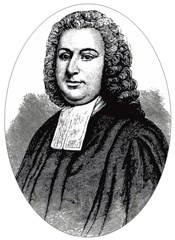
Richard Schlecht, copyright by Richard Schlecht 
European explorers and traders may have arrived in the Maryland Piedmont region as early as 1715, and the earliest land surveys were conducted in Frederick county in the 1720s. Land speculators, like Daniel Dulaney (the elder) and his son (the younger), patented properties that were thousands of acres. These transactions were primarily land speculation ventures that were subdivided and leased or sold to tenants. By the mid-18th century, two separate agricultural systems stemming from the predominance of British and German settlement had developed in the Monocacy region. German settlers generally farmed smaller tracts of land, cultivating corn, wheat and other subsistence crops. British settlers, on the other hand, initially sought to reproduce the tobacco and slave economy of the tidewater area. Climate differences and market fluctuations, however, eventually led to a greater reliance on commercial grain cultivation in the Monocacy region. At the close of the 18th century, Frederick was a bustling agricultural community but also exhibited significant industrial development. By 1790, Frederick County was the largest wheat producer in the United States, and crops such as flax, corn, orchard fruit, rye, oats, potatoes, and hay were also cultivated. In addition to agricultural productivity, milling and other industries flourished in Frederick County during the 18th century. In fact, by 1791 there were a total of 80 mills of various types operating in Frederick County, including various saw, grist, paper, and flour mills, along with over 400 stills. Several iron manufacture industries also became operational at this time, as did glass production, lime kilns, and charcoal manufacturing. The growth of manufacture and industry facilitated construction of roads and ferries, which in turn led to the establishment of taverns and other service industries. As early as 1748, a ferry and tavern were in operation on the present-day Thomas Farm, at a site known as the Middle Ford. |
Last updated: August 24, 2020
